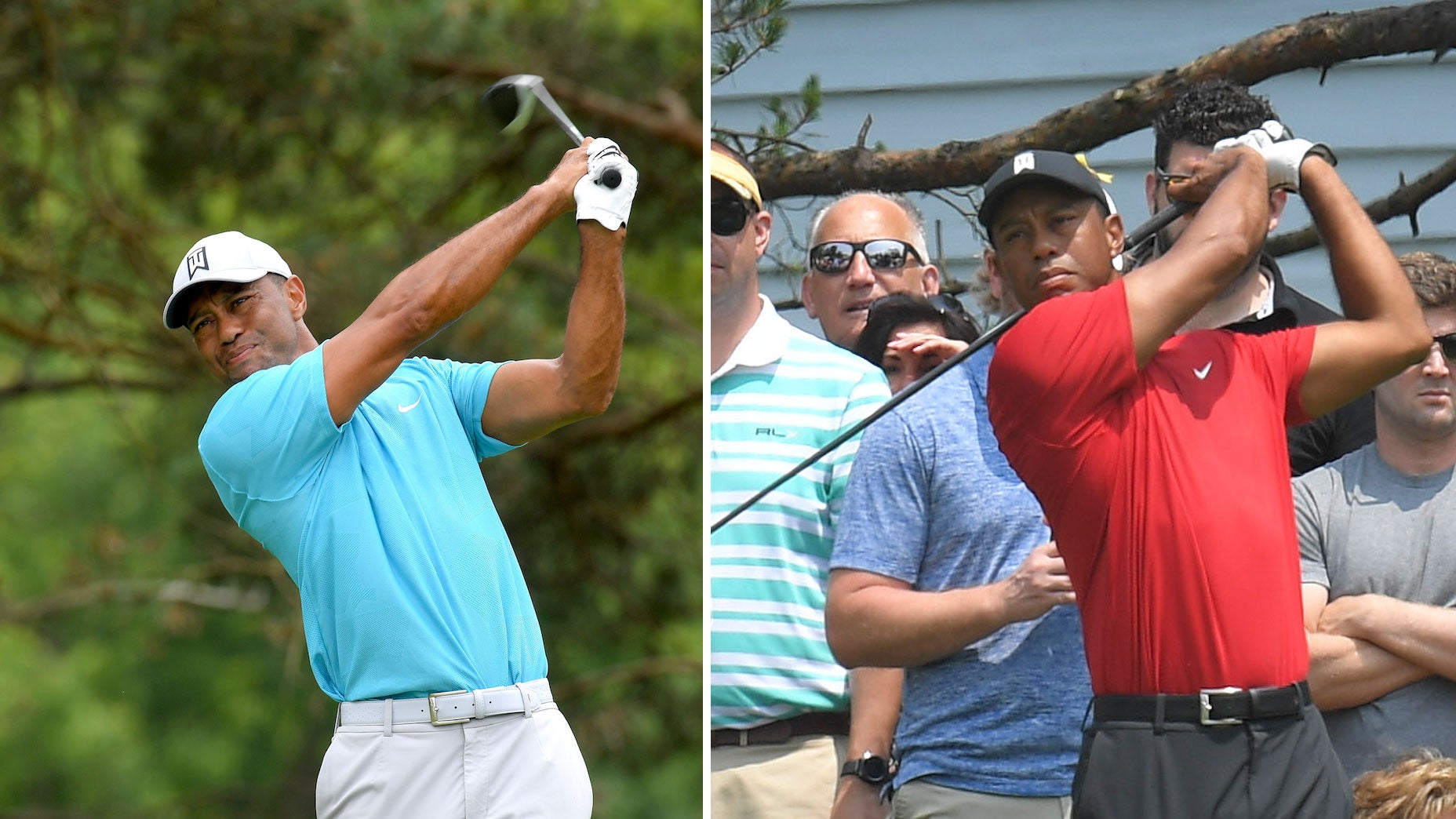There are reminders, now and again, that Tiger Woods sees the world rather differently than you or I.
When golf courses became some of the first businesses to open back up during the coronavirus, many recreational players realized that the course was a plenty safe place to social distance. When Woods thought about returning to tournament play? He thought something distinctly different.
“I’m used to playing with lots of people around me or having lots of people have a direct line to me, and that puts not only myself in danger but my friends and family,” Woods said in his pre-Memorial press conference.”I’m used to having so many people around me or even touch me, going from green to tee. That’s something that I looked at and said, well, I’m really not quite comfortable with that, that whole idea.”
In other words, when Woods heads to the golf course, that’s when he’s around the most people. That’s when he can’t get any distance. But at this year’s Memorial, things are distinctly different. Having actual open space at Muirfield Village, in Woods’ mind, that’s the biggest change of all.
“I hadn’t ever taken these lines off some of these greens,” he remarked after his opening round, a relatively surgical 1-under 71. Normally a sentence about taking different lines would involve some sort of strategy-talk based on aiming points and gameplay. But no — Woods was talking very literally about walking lines. Where he could go on his own two feet, no marshals or security required.
“Usually we have marshals and ropes. Like for instance, today,it was nice walking off the 16th green and going straight to the [17th] tee instead of walking around. It’s certainly different around here with some of the walks. But you get from point A to point B very directly.”
This is a feeling that has been echoed by Rory McIlroy, perhaps the player in the field who (in normal tournament times) has the second-hardest time traveling from place to place unobstructed.
“I sort of like it,” McIlroy admitted at the RBC Heritage. “It’s quiet. You can get from A to B and not get stopped 20 times.”
These are the secondary concerns of these sportsmen, who have both acknowledged that they mostly miss the fans and the energy that comes with a gallery. They know that their Tour needs fans eventually, too, for reasons both atmospheric and financial. Plus, there are unintended difficulties that come with a smaller crowd: McIlroy spent some time at the Travelers Championship playing traffic cop with various camera crew members, unaware that their typical movements were now easier to hear — and thus more distracting. Woods noticed the same thing on Thursday. The sounds stand out.
“There were still a lot of moving carts and a lot of media that were moving around,” he said.
It might seem like minutiae, just a nothing detail. But that’s the good stuff. It’s a little peek into the celebrity psyche, a reminder that there’s plenty that separates the life of a PGA Tour superstar from that of a more anonymous peer. It must be less draining for Woods, or McIlroy, or Mickelson, or Spieth, to show up to the course knowing he won’t be grabbed, clamored for, screamed at, overheard. What does that mean for their respective scores? It’s tough to quantify and evaluate the advantages and disadvantages of a large gallery. But this is their new normal, for better or worse.
“Certainly it’s a different feel, one that’s a new reality,” Woods said. “And we’re going to have to get used to it.”
